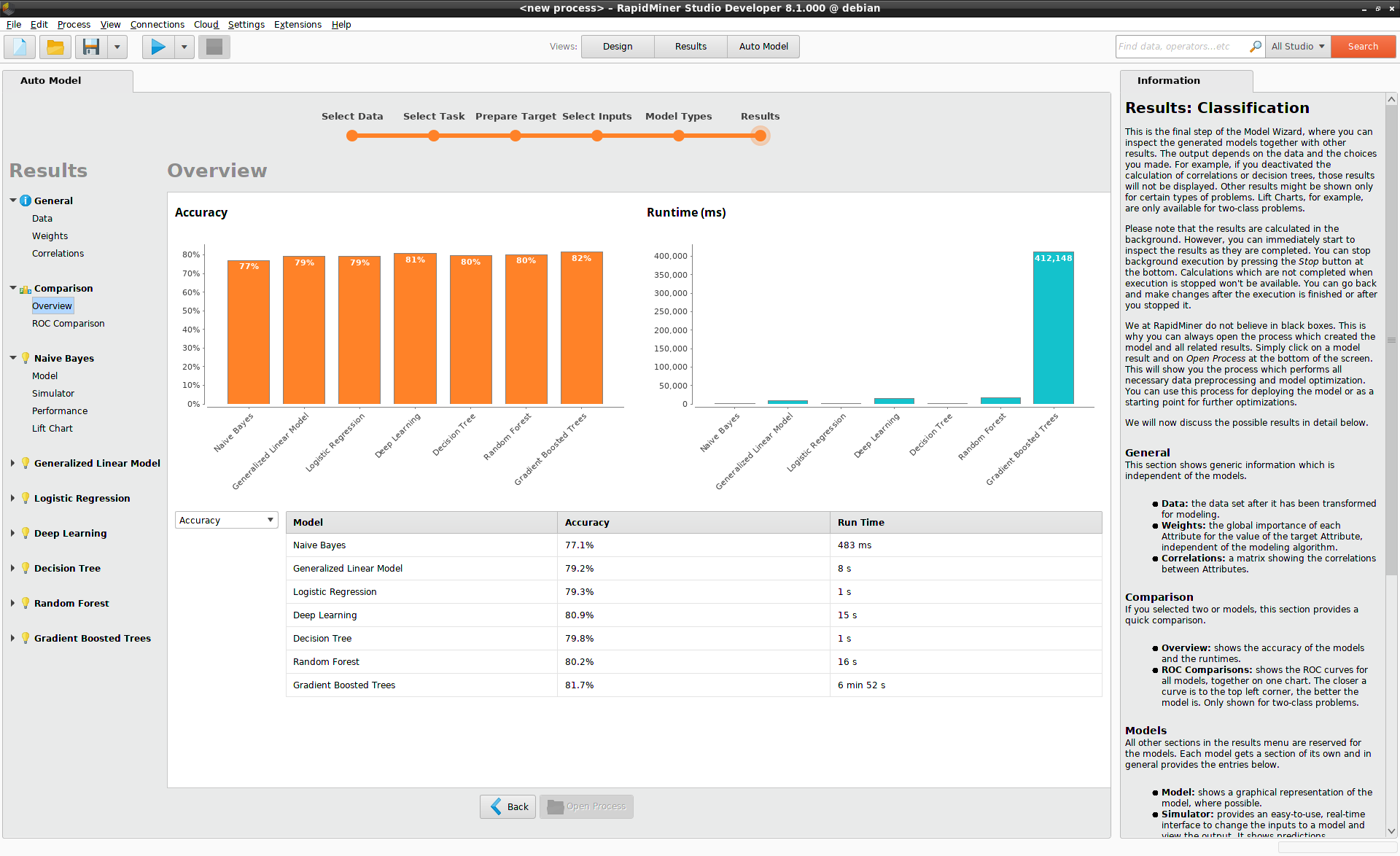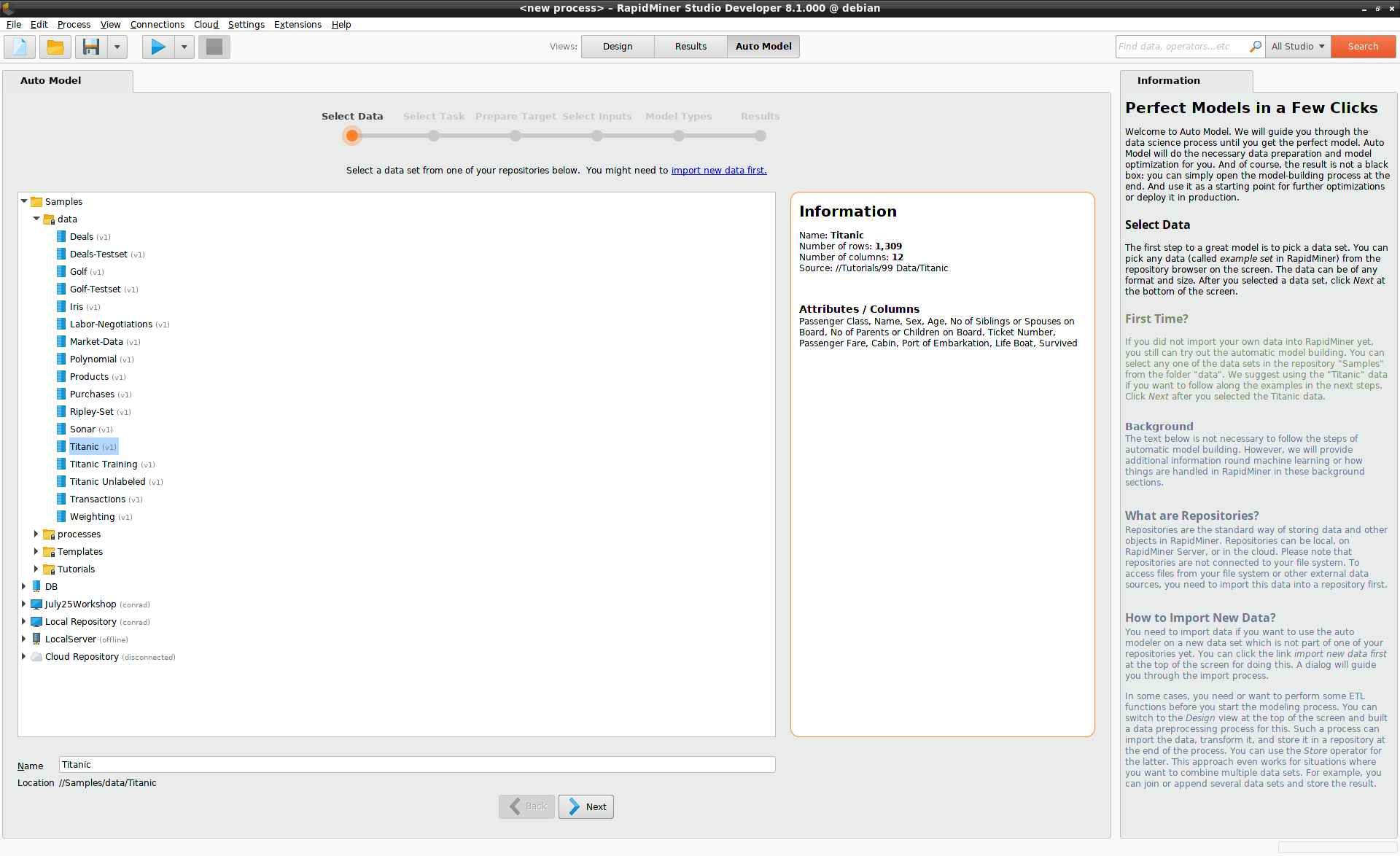
In 2019, Gartner placed RapidMiner in the leader quadrant of its Magic Quadrant for Data Science & Machine Learning Platforms for the sixth year in a row.
Rapidminer studio auto model free#
The RapidMiner Studio Free Edition, which is limited to one logical processor and 10,000 data rows, is available under the AGPL license, Products The RapidMiner Marketplace provides a platform for developers to create data analysis algorithms and publish them to the community. RapidMiner functionality can be extended with additional plugins which are made available via RapidMiner Marketplace. RapidMiner provides learning schemes, models and algorithms and can be extended using R and Python scripts. Individual functions can be called from the command line. Alternatively, the engine can be called from other programs or used as an API. Each operator performs a single task within the process, and the output of each operator forms the input of the next one. Those workflows are called “Processes” in RapidMiner and they consist of multiple “Operators”. RapidMiner provides a GUI to design and execute analytical workflows. RapidMiner is written in the Java programming language. RapidMiner provides data mining and machine learning procedures including: data loading and transformation (ETL), data preprocessing and visualization, predictive analytics and statistical modeling, evaluation, and deployment. RapidMiner uses a client/server model with the server offered either on-premises or in public or private cloud infrastructures.Īccording to Bloor Research, RapidMiner provides 99% of an advanced analytical solution through template-based frameworks that speed delivery and reduce errors by nearly eliminating the need to write code.


In 2013, the company rebranded from Rapid-I to RapidMiner.
Rapidminer studio auto model software#
In 2007, the name of the software was changed from YALE to RapidMiner. Starting in 2006, its development was driven by Rapid-I, a company founded by Ingo Merissa and Ralf Klinkenberg in the same year. The algorithm enables a “backward propagation” over the respective neurons to make them more appropriately perceptive for the problem at hand (the essential functionality of that particular neural network for the requisite problem-solving).RapidMiner, formerly known as YALE (Yet Another Learning Environment), was developed starting in 2001 by Ralf Klingenberg, Ingo Merissa, and Simon Fischer at the Artificial Intelligence Unit of the Technical University of Dortmund. The data is run through a number of neurons over a number of different layers (to process different aspects of the data), with subsequent layers dependent on activations in the prior ones. There has to be a target variable that will be predicted.

The data is in a basic spreadsheet and / or general dataframe structure, with variables in the column headers, row data as examples, and the information cells as numeric values (including for dummy and for categorical values). Basically, variables as columnar data is fed into the ANN, and based on observed features, the artificial neural network will reduce the data to particular outcomes. The “neurons” are represented by the round nodes, and the “synaptic signals” are represented by the lines (paths for the synaptic signaling).

Based on this basic approach, many types of ANNs have been created.


 0 kommentar(er)
0 kommentar(er)
